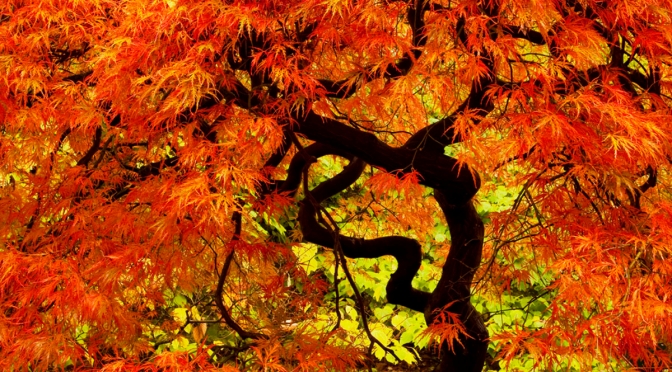Every true traditional Japanese garden has a pogoda. The pogoda is distinguished from the lantern by its multiple layers of roofs. The temple pogoda, like the famous Nara Temple or the temple at San Francisco’s Japanese Tea Garden (pictured above), is a thin tower with 5-13 floors, each of which has its own roof. Usually made of granite or basalt, it originates from Buddhist Asia, and can be found in Japan, China, Thailand, Korea, Vietnam and Nepal, according to My Oriental Garden. Unique in the Japanese garden, the pogoda is the primary ornamental focal point of the garden that is recognizably made in the image of man versus God; man-made. Perhaps, this symbolizes its religious origins, Buddhism and Taoism, as the enlightened person being in harmony with the natural world.
Functionally, the pogoda and lantern are clearly distinguishable in a Japanese garden. The lantern originates from Buddhist temples to light the pathway to the temple (see more information at Koto Jazz 12: Japanese Lanterns. The pogoda on the other hand, symbolizes the temple itself.
When a pogoda features five roofs and floors, it reflects back to the five elements of Buddhism, or “godai” (“gogy” in Chinese), also referenced to describe lanterns (see above link) – Wind (kaze), Water (sui or mizu), Earth (chi or tsuchi), Fire (ho, ka or hi) and Void or Spirit (ku). Sometimes a sixth element is included, Consciousness (shiki).
Note the (Confucian) “yin” and “yang” type of qualities of the five elements. The Wind (kaze) represents inward breathing and open mindedness. In Buddhist philosophy it can also mean evasiveness on the one hand, or compassion and wisdom on the other. Water (sui or mizu) adapts to the environment and changes with the seasons. It can also be associated with defensiveness on the one hand, and adaptability and flexibility on the other. The Earth (chi) (including plants), stable and solid as a stone and confident (ideals particularly in western cultures), can also mean stubbornness and resistance to change. Fire (ka) represents human drive and passion (ideals particularly in western cultures), but also unrestrained desire. Void or Spirit (ku) represents creative energy, spontaneity, and inventiveness.
I recently wrote a piece called Alpine Wind Storm representing the complete opposite and not at all consistent with Buddhist meaning of Wind ;-/, which is featured live here; other koto songs below are more symbolic of the Buddhist intended symbolism of the Wind and the other four elements:
– Koto Jazz medley live at the Brass Tacks, Seattle (July 5th). Kozan no Kaze is inspired by world renowned jazz piano player, Li Pui Ming’s style of jazz which I call “chaos jazz” (my piece is also more “chaos jazz” than koto jazz). I will also feature this piece when I play at the Royal Room, Seattle in September (see events section)
1) The Wind:
2) Water:
3) Earth (including plants):
4) Fire:
4) Void or Spirit:







